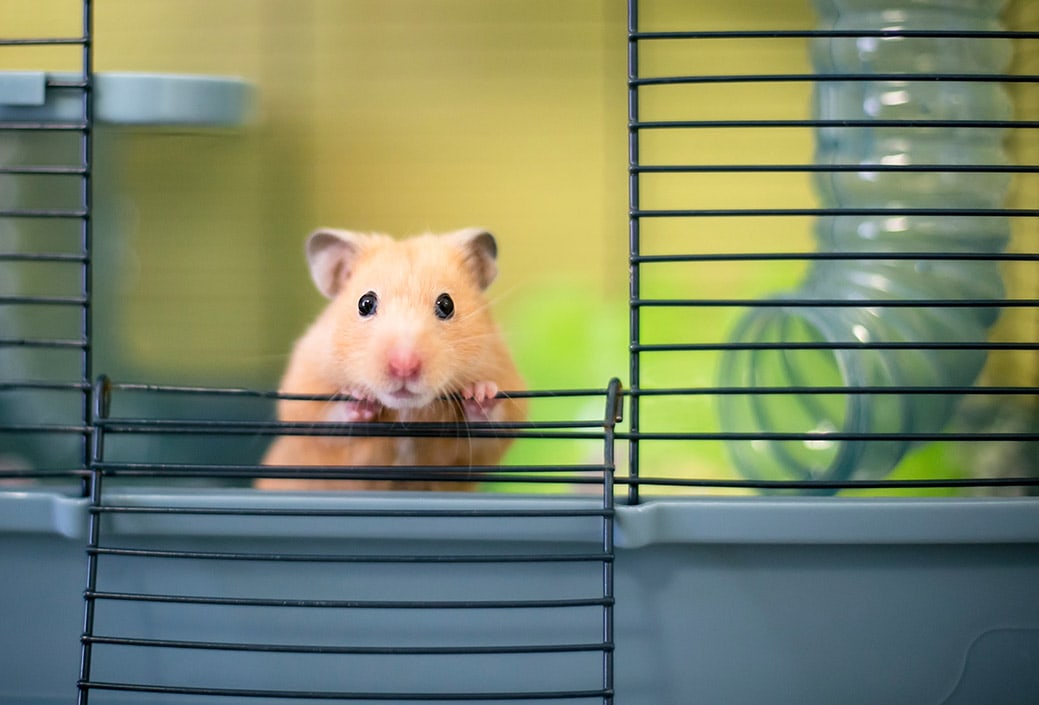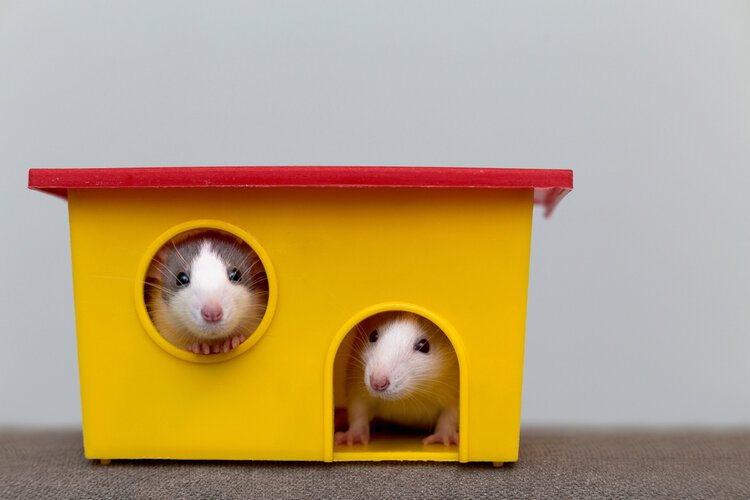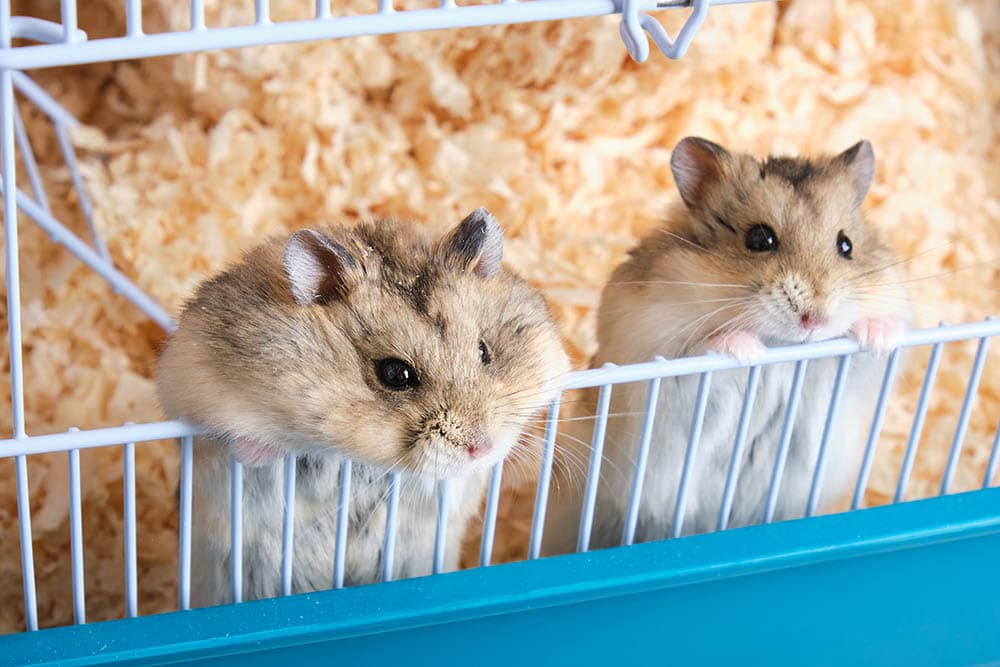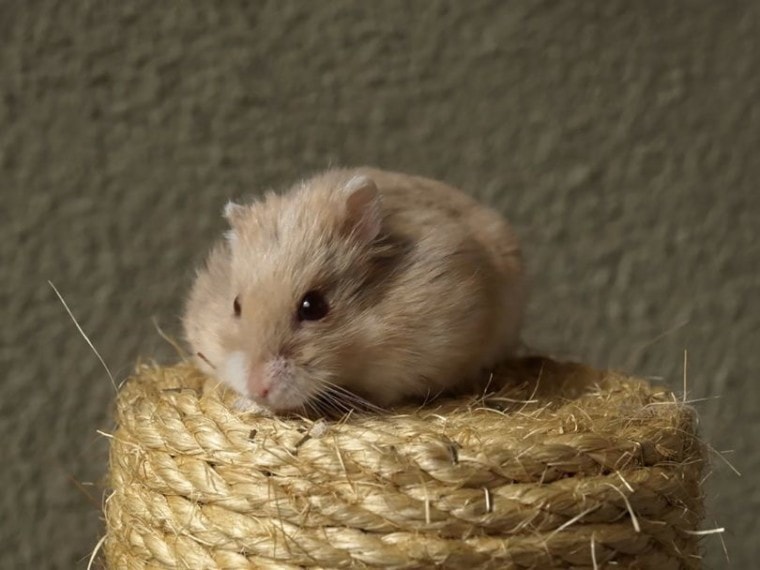
If you’re a new and proud owner of an adorable female hamster, it’s always an excellent idea to research the care of your new pet. You might also be interested in breeding hamsters.
One question that might have cropped up during your research is, how often will a female hamster go into heat? It might surprise you to learn that female hamsters go into heat every 4 days!
If you’re interested in learning more about the hamster’s heat cycle and how this whole reproduction thing works, read on!
When Do Female Hamsters Have Their First Heat Cycle?
Hamsters have an average lifespan of about 3 years, which means they do everything much faster than most other mammals.
They reach sexual maturity by about 4 to 6 weeks, and female hamsters might have their first heat cycle by about 4 to 5 weeks of age. But even if she’s technically sexually mature, it’s not recommended to allow her to breed until she is about 10 weeks old.
What Are the Signs That a Hamster Is in Heat?

There are several signs that will tell you that your hamster is in heat.
Discharge
During an estrus cycle (when she’s in heat or sexually receptive), the female hamster will have vaginal discharge. At the beginning of her heat cycle, there will be a small amount of clear discharge, which will change to a thicker and whiter substance by the third day. Her genitals will also look red and a little swollen.
For hamster breeders, the optimal day for breeding is some time on the second day, when the discharge is white. Once her discharge is drier and has changed in consistency, she is past the point of being successfully bred.
Scent
When a female hamster is in heat, she will emit a scent that might be described as pungent and musky. This scent is designed to attract any nearby males to let them know that she is ready for mating.
Behavior
Female hamsters engage in several different behaviors when in heat. First, she might be more aggressive than usual and might try nipping at you or anyone who comes near her. She will also likely be more fidgety and active; essentially, she’s on the lookout for a male hamster.
Finally—and this is one of the best ways to determine if your hamster is in heat or not—try stroking her back closer to her tail. If she freezes in place, flattens out, and lifts her tail, she’s positioning herself for mating with a male hamster.
How Does a Hamster’s Heat Cycle Work?
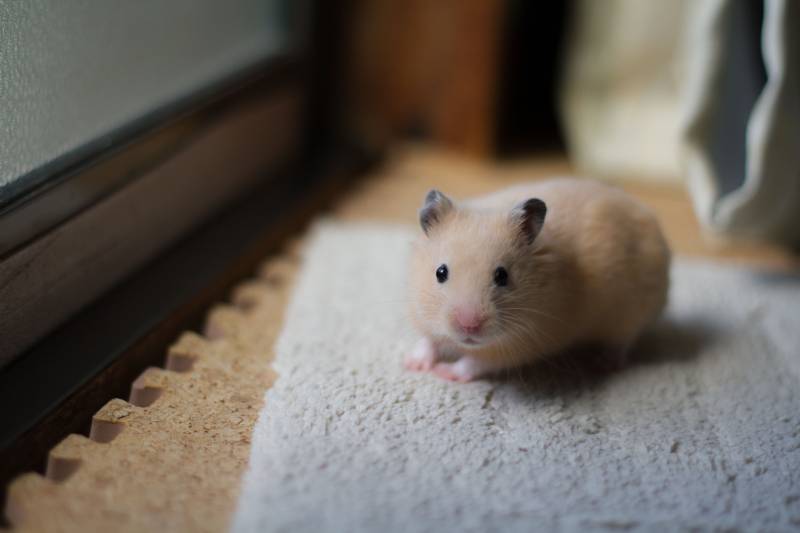
On the morning of the first day, when the hamster is in estrus, she is sexually dormant until the evening. On the evening of day one, she is sexually receptive, and by the evening of day two, she is sexually dormant again.
By day four, the hamster has been sexually dormant since the second day of the estrus cycle. Then on day five, the entire estrus cycle begins anew and is technically day one again. This explanation is on the assumption that she did not mate and conceive. If conception occurred during the cycle, her cycle won’t reset until after she gives birth.
So, the evening of day one until the evening of the second day is the best time for mating for a female hamster in estrus.
Signs of a Pregnant Hamster
If a female hamster was in a cage with a male on day two of her estrus cycle, she’s likely pregnant.
Taking Care of Your Pregnant Hamster
If you suspect that your hamster is indeed pregnant, there are a few steps that you should take to help her throughout her pregnancy and to prepare for the babies.
Breeding Hamsters Is Not for Everyone

Even though it’s easy to get a hamster pregnant, and when you consider how short the gestation period is (16 to 22 days, depending on the hamster species), you would think that breeding hamsters would be a breeze. But it is far from that!
Genetics
First, you need to do your research to better understand the intricacies of hamster breeding. This includes ensuring that the pups won’t suffer from genetic conditions, including health problems and neurological issues. Breeding hamsters without knowing anything about their genetic history isn’t recommended.
Aggression
Female hamsters can be aggressive during mating. They tend to be larger than the males, and it’s not uncommon that she’ll attack the male during the mating process, so there needs to be constant supervision.
Syrian hamsters, in particular, are solitary animals, so you’ll need separate cages for every hamster owned, including the babies after they hit about 6 weeks of age.
Survival Rate of Pups
Another issue with breeding hamsters is how sensitive things are with the pups and mother. Mothers are prone to abandoning their babies, particularly young and new mothers. If they get stressed, they may kill or cannibalize their pups.
If she abandons them, taking care of the pups yourself can be time consuming and incredibly challenging. If you can’t rehome the babies, you’ll need multiple cages with bedding, enrichment, food, and water, which means you’ll also need plenty of time, money, and resources.

Conclusion
Female hamsters spend a great deal of time in heat: They are in estrus every 4 days, with the second day being the best time for mating.
One of the easiest ways to determine if a hamster is in heat is by stroking her lower back close to her tail. If she flattens out and raises her tail, she’s letting any available males know that she’s ready to mate.
Breeding hamsters should only be done by experts in hamsters or someone with a great deal of experience with them. They are not the easiest animal to own for breeding purposes, and you’ll need enough equipment, time, and finances to do so.
Featured Image Credit: Sandra Cheng, Pixabay



